丙烯酸异辛酯(2-EHA)

丙烯酸异辛酯(2-EHA)结构式

|
常用名 | 丙烯酸异辛酯(2-EHA) | 英文名 | 2-Ethylhexyl acrylate |
|---|---|---|---|---|
| CAS号 | 103-11-7 | 分子量 | 184.275 | |
| 密度 | 0.9±0.1 g/cm3 | 沸点 | 216.0±0.0 °C at 760 mmHg | |
| 分子式 | C11H20O2 | 熔点 | -90ºC | |
| MSDS | 中文版 美版 | 闪点 | 79.4±0.0 °C | |
| 符号 |

GHS07 |
信号词 | Warning |
丙烯酸异辛酯(2-EHA)用途用作聚合单体,用于软性聚合物,在共聚物中起内增塑作用 |
| 中文名 | 丙烯酸异辛酯 |
|---|---|
| 英文名 | 2-Ethylhexyl acrylate |
| 中文别名 | 丙烯酸-2-乙基己酯 |
| 英文别名 | 更多 |
| 密度 | 0.9±0.1 g/cm3 |
|---|---|
| 沸点 | 216.0±0.0 °C at 760 mmHg |
| 熔点 | -90ºC |
| 分子式 | C11H20O2 |
| 分子量 | 184.275 |
| 闪点 | 79.4±0.0 °C |
| 精确质量 | 184.146332 |
| PSA | 26.30000 |
| LogP | 4.33 |
| 外观性状 | 无色液体 |
| 蒸汽密度 | 6.4 (vs air) |
| 蒸汽压 | 0.1±0.4 mmHg at 25°C |
| 折射率 | 1.434 |
| 储存条件 | 储存于阴凉、通风的库房。远离火种、热源。避光保存。库温不宜超过30℃。保持容器密封,严禁与空气接触。应与氧化剂、酸类、碱类分开存放,切忌混储。配备相应品种和数量的消防器材。储区应备有泄漏应急处理设备和合适的收容材料。贮存温度2-8ºC |
| 稳定性 | 1. 光照易聚合。避免与强氧化剂、强酸、强碱接触。易燃,遇明火、高热能燃烧。 2. 存在于主流烟气中。 3. 对光敏感,催泪。 |
| 水溶解性 | <0.1 g/100 mL at 22 ºC |
| 分子结构 | 1、 摩尔折射率:54.46 2、 摩尔体积(cm3/mol):209.0 3、 等张比容(90.2K):480.9 4、 表面张力(dyne/cm):27.9 5、 介电常数: 6、 偶极距(10-24cm3): 7、 极化率:21.59 |
| 计算化学 | 1.疏水参数计算参考值(XlogP):3.8 2.氢键供体数量:0 3.氢键受体数量:2 4.可旋转化学键数量:8 5.互变异构体数量:无 6.拓扑分子极性表面积26.3 7.重原子数量:13 8.表面电荷:0 9.复杂度:152 10.同位素原子数量:0 11.确定原子立构中心数量:0 12.不确定原子立构中心数量:1 13.确定化学键立构中心数量:0 14.不确定化学键立构中心数量:0 15.共价键单元数量:1 |
| 更多 | 1. 性状:无色透明液体,无臭无味。 2. 密度(g/mL,20/4℃):0.8845 3. 相对蒸汽密度(g/mL,空气=1):6.35 4. 熔点(ºC):-90 5. 沸点(ºC):123~127(7998pa) 6. 折射率(n20ºC):1.4365 7. 黏度(mPa·s,20ºC):1.54 8. 闪点(开杯,ºC):86 9. 自燃点或引燃温度(ºC): 252 10. 蒸气压(mmHg,20ºC):0.15 11. 蒸气压(kPa,20ºC):0.02 12. 蒸发热(KJ/mol):47.0 13. 爆炸上限(%,V/V):6.4 14. 爆炸下限(%,V/V):0.9 15. 溶解性:能与乙醇、乙醚混溶,微溶于水。 16. 液相标准热熔(J·mol-1·K-1):380.8 |
|
||||||||||||||||||||||||||||||||||||||||||||||||||||||||||||||||||||||||||||||||||||||||||||||||||||||||||||||||||||||||||||||||||||||||||||||||||||||||||||||||||||||||||||||||||||||||||||||||||||||||||||||||||||||||||||||||||||||||||||||||||||||||||
|
丙烯酸异辛酯(2-EHA)毒理学数据: 1、刺激性:家兔经皮:20mg/24 小时,中度刺激。家兔经皮:开放性刺激试验, 500mg,轻度刺激。家兔经眼: 5mg,重度刺激。家兔经眼: 500mg/24 小时,轻度刺激。 2、急性毒性:大鼠经口LD50:5600mg/kg;兔经皮LD50:7539mg/kg 3、对眼睛、呼吸系统和皮肤有刺激性。 丙烯酸异辛酯(2-EHA)生态学数据: 该物质对水有稍微的危害。 |
| 符号 |

GHS07 |
|---|---|
| 信号词 | Warning |
| 危害声明 | H315-H317-H335-H412 |
| 警示性声明 | P273-P280-P304 + P340 + P312-P333 + P313 |
| 个人防护装备 | Eyeshields;Faceshields;full-face respirator (US);Gloves;multi-purpose combination respirator cartridge (US);type ABEK (EN14387) respirator filter |
| 危害码 (欧洲) | Xi:Irritant |
| 风险声明 (欧洲) | R37/38;R43 |
| 安全声明 (欧洲) | S36/37-S46 |
| 危险品运输编码 | UN3334 9 |
| WGK德国 | 1 |
| RTECS号 | AT0855000 |
| 海关编码 | 29161290 |
|
~% 
丙烯酸异辛酯(2-EHA) 103-11-7 |
| 文献:US2003/216587 A1, ; Page/Page column 3-4 ; |
|
~% 
丙烯酸异辛酯(2-EHA) 103-11-7 |
| 文献:US2917538 , ; |
|
~% 
丙烯酸异辛酯(2-EHA) 103-11-7 |
| 文献:Journal of the American Chemical Society, , vol. 67, p. 57 |
|
~% 
丙烯酸异辛酯(2-EHA) 103-11-7 |
| 文献:US2809976 , ; |
|
~% 
丙烯酸异辛酯(2-EHA) 103-11-7 |
| 文献:Tetrahedron, , vol. 48, # 31 p. 6371 - 6384 |
|
~% 
丙烯酸异辛酯(2-EHA) 103-11-7 |
| 文献:J. Appl. Chem. USSR (Engl. Transl.), , vol. 64, # 9 p. 1955 - 1959,1811 - 1815 |
1.直接酯化法丙烯酸与2-乙基己醇以硫酸为催化剂进行酯化,再经中和,脱醇和精馏得成品。
2.酯交换法丙烯酸甲酯与2-乙基己醇在催化剂四氯化钛存在下进行酯交换反应生成丙烯酸-2-乙基己酯,经精馏制得成品。
3.将丙烯酸甲酯与2-乙基乙醇胺按3∶1(摩尔比)混合,在227~228℃下进行气相酯交换反应,催化剂为载于硅胶上的四氯化钛,转化率为32%,收率为97%,当酯交换反应在液相条件下进行时,收率为70%~80%
4.在反应釜中加入一定量的丙烯酸、异辛醇、催化剂(SO42-/ZrO2)和阻聚剂吩噻嗪,加热回流至无水分出。反应液经碱洗、水洗至中性减压蒸馏,收集产品。催化剂用量为丙烯酸质量的5%,阻聚剂用量为丙烯酸质量的0.05%,原料配比狀(异辛醇)∶狀(丙烯酸)=1.2∶1,反应温度120℃,反应时间3h。
| 海关编码 | 2916129000 |
|---|---|
| 中文概述 | 2916129000 其他丙烯酸酯. 增值税率:17.0% 退税率:9.0% 监管条件:无 最惠国关税:6.5% 普通关税:30.0% |
| 申报要素 | 品名, 成分含量, 用途, 丙烯酸、丙烯酸盐或酯应报明包装 |
| Summary | 2916129000 other esters of acrylic acid VAT:17.0% Tax rebate rate:9.0% Supervision conditions:none MFN tariff:6.5% General tariff:30.0% |
|
Development and application of a non-targeted extraction method for the analysis of migrating compounds from plastic baby bottles by GC-MS.
Food Addit. Contam. Part A. Chem. Anal. Control. Expo. Risk Assess. 31(12) , 2090-102, (2014) In 2011, the European Union prohibited the production of polycarbonate (PC) baby bottles due to the toxic effects of the PC monomer bisphenol-A. Therefore, baby bottles made of alternative materials, ... |
|
|
Prediction of the reduced glutathione (GSH) reactivity of dental methacrylate monomers using NMR spectra - Relationship between toxicity and GSH reactivity.
Dent. Mater. J. 28(6) , 722-9, (2009) It has been established that the toxicity of acrylate and methacrylate monomers is driven by their reactivity towards glutathione (GSH). With this relationship, the objective of this study was to pred... |
|
|
The potential dermal irritating effect of residual (meth)acrylic monomers in pressure sensitive adhesive tapes.
Drug Chem. Toxicol. 33(1) , 1-7, (2010) It is generally thought that residual unpolymerized (meth)acrylic monomers commonly found in pressure sensitive adhesive tapes for medical use may cause dermal irritation, but a systematic study has n... |
| ETHOXY-2-ETHYLACRYLATE |
| 2-Ethyl-1-hexyl acrylate |
| Acrylic Acid 2-Ethylhexyl Ester Monomer |
| UNII-HR49R9S6XG |
| 2-Propenoic acid, 2-ethylhexyl ester |
| 2-ethylhexyl propenoate |
| 2-ethyl |
| 2-Ethylhexanol acrylate |
| 2-ethyl-hexyl acrylate |
| MFCD00009495 |
| 2-Ethyl hexyl acrylate |
| acrylic acid, 2-ethylhexyl ester |
| Octyl Acrylate Monomer |
| ethylhexyl acrylate |
| 2-Ethylhexyl acrylate (2-EHA) |
| Mono(2-ethylhexyl) acrylate |
| 2-ethylhexyl prop-2-enoate |
| 2-ETHYLEXYL ACRYLATE |
| EINECS 203-080-7 |
| Acrylic Acid Octyl Ester Monomer |
| OCTYL ACRYLATE |
| 2-Propenoic acid 2-ethylhexyl ester |
| acrylic acid 2-ethylhexyl ester |
| 2-EHA |
| ETHYL-2-HEXYLACRYLATE |
| 1-Hexanol, 2-ethyl-, acrylate |
| 2-ethvlhexvlacrvlate |
| O-2-ethylhexyl acrylate |
| 2-ethylheksyl acrylate |
| 2-Ethylhexyl Acrylate Monomer |
| EHA |

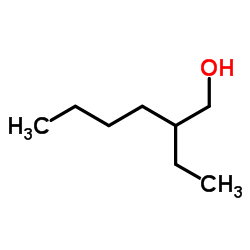



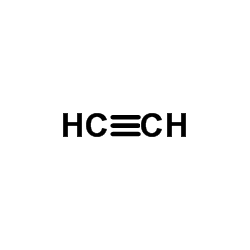
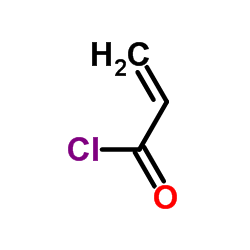

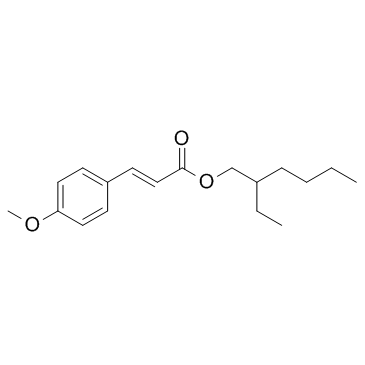 CAS号5466-77-3
CAS号5466-77-3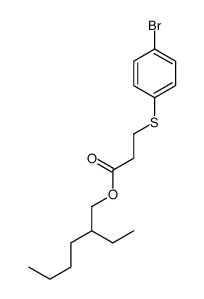 CAS号881664-08-0
CAS号881664-08-0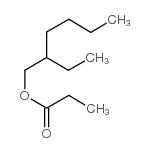 CAS号6293-37-4
CAS号6293-37-4 CAS号81733-97-3
CAS号81733-97-3

